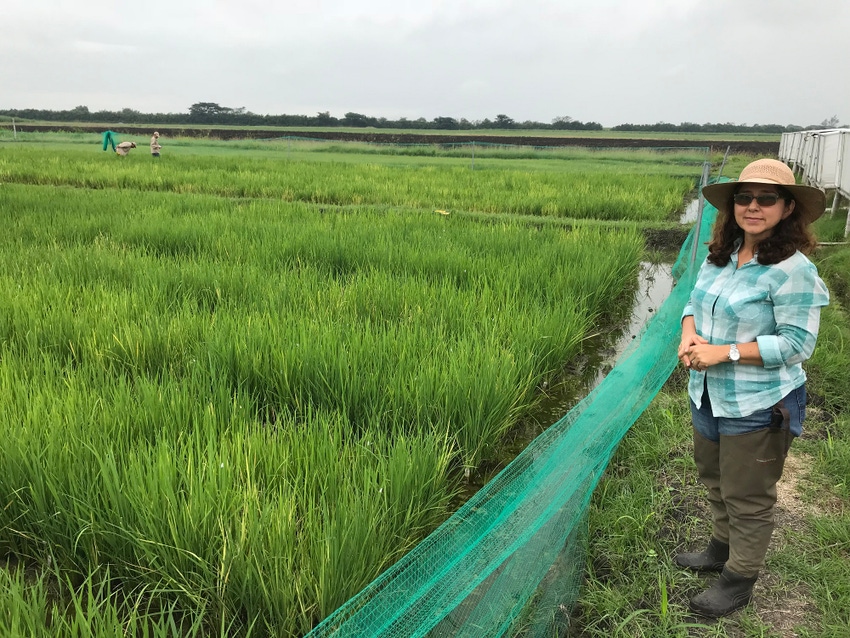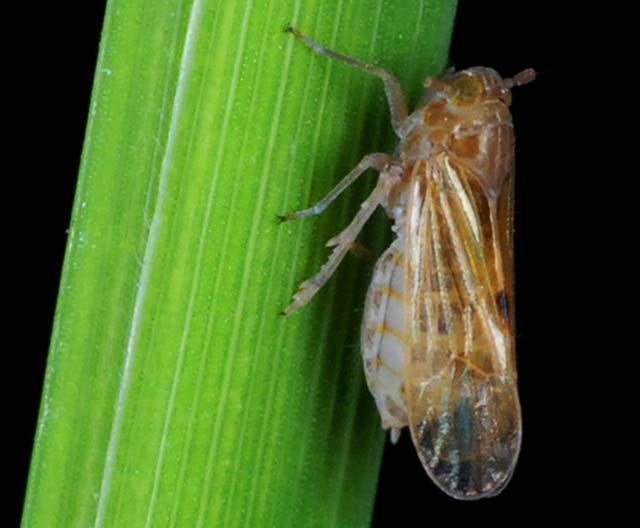
Mo Way is working on a contingency plan for a problem he hopes he never has to deal with.
The rice planthopper appeared in high populations in Texas rice fields in 2015. “It was a widespread problem,” says Way, professor of entomology, Texas AgriLife Research and Extension Center, Beaumont, Texas.
Speaking at the recent Conservation Systems Cotton and Rice Conference in Memphis, Tenn., Way surmised that a storm could have blown the pest in from Mexico. “We had quite an infestation,” he says.
Damage was extensive in many fields across the south Texas rice production area. “All counties west of Houston were infested, regardless of variety planted. Some patches in the field were completely destroyed,” he says. He showed PowerPoint photos of fields with large spots of dead rice plants. “But whole fields were affected to some extent, not just those dead spots.”
The insects also secrete honey dew, on which sooty mold fungus develops. The rice planthopper also transmits a virus, hoja blanca (white leaf disease), to the rice plant. Way says symptoms resemble chinch bug damage, stippling and speckling, and yellowed plants showed up across many infested fields. “The virus is transmitted to the eggs and to the next generation.

“The pest was quite a problem in 2015,” he says. “But we have not seen it since, not one specimen. We surveyed across the rice belt the last two years and the pest has not been found since 2015. It’s hard to understand why it just disappeared. I hope we do not see it again, but in anticipation of another invasion, we are being pro-active with research.”
Way traveled to the International Center for Tropical Agriculture (CIAT), in Colombia, South America, to learn more about the rice planthopper and the virus it transmits. “They are seeing more problems form the pest and hoja blanca in Central and South America,” Way says. “It is native to that area. Researchers are looking at tolerant varieties, which seem to be detrimental to the insect.”
He says some varieties appear to be tolerant of both the insect and the virus. “The International Center for Tropical Agriculture’s best practice recommendation is tolerant varieties,” Way adds. He says a research pathologist and a research entomologist are working together to develop management strategies.
“We plan on sending seed to CIAT to screen for resistance.”
Way urges producers and consultants to be on the lookout for the pest next season.
Cliff Mock, a rice farmer and crop consultant from Alvin, Texas, talked briefly about another pest that could cause problems for rice farmers. “The channel apple snail may be turning into a problem,” Mock says. The snail, described as about the size of a tennis ball, does no apparent damage to rice plants, “but they break through our levees,” Mock says.
“They have caused problems in Asia and South America,” says Way. The snail is an introduced species.
About the Author(s)
You May Also Like






